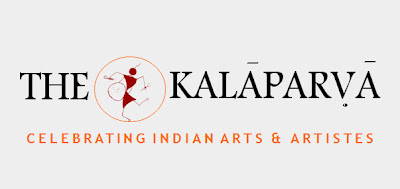
(Article first published in print in Ananya's Abhivyakti, September 2011)
"Geetam vadyam tatha nrityam, trayam sangitamuchyate"
Songs(geetam), instrumental music(vadyam) and dance(nrityam) comprise music (sangeeta)- so said Saarangadeva in his treatise Sangeeta Ratnakara. As artistes step back from their vibrant happenings of the artistic world to brood into some such rich Sanskrit verses in our treatises, one realizes how far we stand from “practicing the theory”. This shloka very simply enumerates how literature, music and dance are closely knitted to demand co-existence. But does the practical scenario second this thought?
Dr. Padma Subrahmanyam in one of her lectures recently lamented “The artiste fraternity needs to develop an open mind as a war footing goal. Most dancers do not attend music concerts; musicians do not follow the dance happenings. Literature scholars get only the related public as their audience and visual artistes work only for the buyers. So where is art appreciation within art community in the true sense of the word? No wonder then that we crib about classical arts loosing sheen”
As a flash in the pan this thought triggered the forming of a virtual and real spotlight on the issue. At the outset though music, dance, literature and other arts are taken in the same breath, each of these silt their individual characteristic traits upon invasion, which makes for the separated phenomenon.
A musician of vocal and instrumental music enjoys his wonder into the depth of the ragas, his creativity into bringing the nuances of music to the fore, his impromptu singing – the manodharma sangeetham. Given this genre, a musician, if watching a dance performance, would be tempted towards the musical aspect of it which barely touches its true spirit for him. He justifies his stance on his inability to concentrate on the dance leaving alone the music which here becomes only a tool to enhance the performance! Neither the dance or the dancer is benefited nor does the musician becomes an engaging audience. As for their keenness towards participating in other allied arts (viz. visual etc), there exists a strange uneasiness for whatever the reason may be. Simply put, given a choice they would rather watch another musician perform.
Dance community is no different. If they are not busy rehearsing, marketing or performing, they would oblige another dancer by being an audience. A gesture of encouragement to the other allied arts would require a strong stimulus of making a presence felt and that too only at a level of higher professional existence. Visual and other fine art practitioners would no where loiter around performing arts. This, I am guessing, would be attributed to too much of happenings that essentially disturb a peaceful and space oriented approach for their art.
The reference also relates to other related artistic inclinations like propagation and education. A study of music in colleges would confine to the topic alone, dance study will include music, but only to the extent required for dance and its presentation, propagation of works and achievements of contemporaries in the field would take precedence over that of other arts, thereby allowing very little or no scope for any collaborative experiment to have the communities engage, understand and appreciate the other related art form better!
So as we justify respective approaches, where do we draw a consensus for the good of all arts? Does our education system even realize the importance of initiating the young minds into a combined and comprehensive study of Indian arts as diligently as into the sciences? On a more professional platform does our cultural administrative set up consider all the arts as a homogeneous lot and attend to it so as to create a oneness? Or is it the artistes themselves who do not want to take the mantle of creating an ‘Artistic Co-existence’?

